Teaching experimental science in a time of social distancing
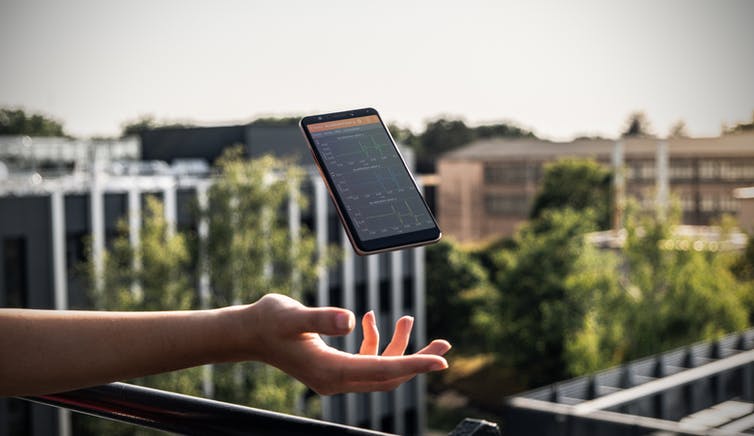
Editor’s note: This story is shared as we feel it will interest our readers here in New Zealand – it makes some interesting suggestions about how science can be explored in creative and exciting ways by learners and teachers practicing social distancing – but it has been written by French educators and thus references France.
When lockdown measures were announced in France and other countries, secondary-school teachers and university professors had to quickly make the transition from classroom teaching to remote education.
As a result, practical work was often abandoned – experiments were no longer possible without a lab, test tubes, oscilloscopes and other equipment.
To overcome this problem, some educators used digital simulations, while others analysed existing data. But people familiar with experimental science know that simulations and simple analysis do not replace the lab bench and real experiments. The role of science is to help us to understand everyday phenomena and “real” experiments are absolutely essential.
As academics working in the field of physics, we have been reflecting about developing new forms of practical work that allows for greater student autonomy for several years now. At Université de Bordeaux and Paris-Saclay, we asked our students to create their own experiment, and in some cases, to conduct them independently with smartphones or Arduino boards, an open-source solution for experiments with electronics.
Lockdown was a great chance to test autonomous practical work, so we jumped on it immediately. During the two months of French lockdown – it began on March 17 and ended May 11 – we adapted and continued to teach using experiments without compromising the quality of content. These “life-size” tests convinced us that it is possible to remotely conduct lessons with experiments for both secondary-school teachers and higher-education professors. We have even observed very positive aspects of this new approach. It changes the student’s relationship with science and with their teachers.
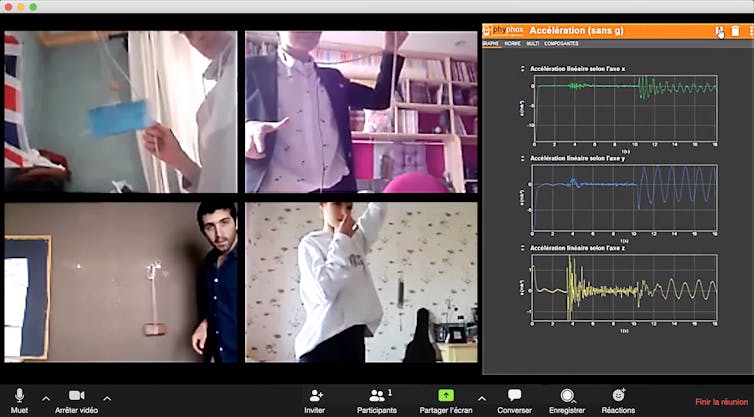
These new education techniques are fantastic opportunities, particularly given that social distancing is likely to persist over the coming year. They do, however, require preparation.
Smartphone and salad spinner
What is lab work without a lab and lab equipment? The priority tool is a smartphone with its many sensors. Apart from recording images or sounds, smartphones can measure acceleration, magnetic fields, rotation speeds, audio spectrum, and some models can even measure pressure or light intensity. Free applications such as Phyphox can be used to measure, analyse and transfer data in just a few seconds. All you need is a bit of imagination and you can start tinkering.
Want to measure the period and damping of a pendulum? Hang your phone from a piece of string and measure its acceleration. Interested in centripetal acceleration? Place your smartphone in a salad spinner and start the accelerometer and gyroscope at the same time.
The imagination of students and teachers is the only limit to these types of experiments, as demonstrated by “The smartphone physics challenge”. The outcome was 61 ways to measure the height of a building!
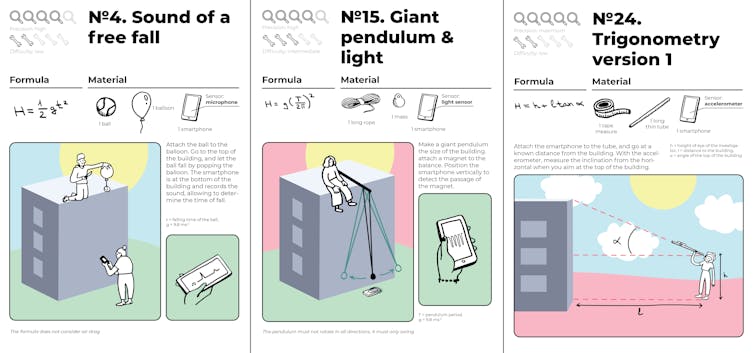
And these techniques are not restricted to physics. It is also possible to conduct simple and precise chemistry and biology experiments at home. For example, you can turn your smartphone into a microscope with a drop of water (and see cells as a result) or a spectrophotometer.
Reinventing education
We have also adapted our teaching methods. At Université Paris-Saclay, we asked about 100 students to autonomously conduct the physics study of their choice. The subjects chosen varied tremendously, including the study of a vinegar rocket and the acoustic modes of musical instruments, the measurement of the earth’s radius and the physics behind yanking a tablecloth from a table without disturbing cutlery placed on it. Students worked in pairs to attenuate the isolation resulting from lockdown.
At Université de Bordeaux, we have set up a site, Smartphonique, that proposes a range of experiments to students and teachers in different fields, including mechanics, acoustic, optics and fluid physics. In addition to protocols, conferences and videos, we organised a collective weekly video conference, “Experiments in Lockdown”, during which students simultaneously experiment and share measurements recorded with their smartphone and the means at hand.
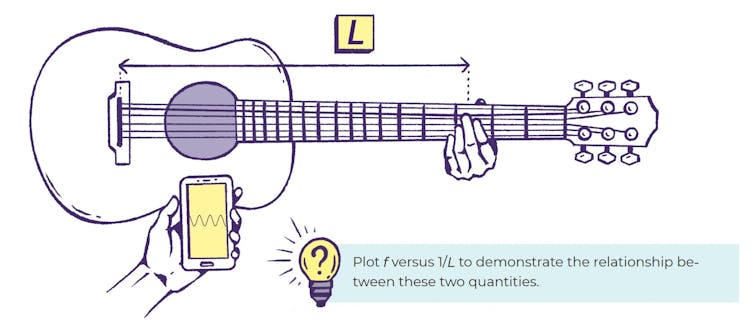
Remote practical exercises are much more interesting
Such new types of practical exercises are not just emergency solutions in a health crisis. They are interesting new educational techniques because they reinforce the relationship with experimentation and the subject. Teachers are no longer looking over students’ shoulders to control each gesture. As a result, students are less afraid of making mistakes, particularly without expensive equipment that could be damaged (aside from the smartphone itself, of course). Results of surveys demonstrate that most students enjoy the freedom and autonomy.
Another advantage: experiments are no longer isolated in a laboratory, which means that physics is no longer an abstract science practised only highly specialised equipment. On the contrary, it is part of everyday life and, as a result, becomes real. Educational qualities also change. Imagination, tinkering and creativity each have a role to play, and they are all features of real research practise. Some student profiles will flourish using this less academic approach.
Finally, by communicating about remote experiments, students use original communication forms typical of participatory science. Working together on a digital platform is conducive to collaborative action.
Prepare the 2020 academic year this summer
Distancing measures at the beginning of the 2020 academic year are likely to change how teaching is organised around the world. Practical work could be one of the first victims… Our message is simple: teaching with experiments at home could well be a practical alternative – but not just a second-rate one. It could be a unique opportunity to review the way we teach scientific disciplines by injecting creativity, freedom and fun.
But we need to prepare for it. Fortunately, learning how is really simple and even fun. If you’re interested, we have developed a number of tools to get you started that you will find on the Physics Reimagined website and Smartphonique.fr. Tempted? Get out your smartphone!![]()

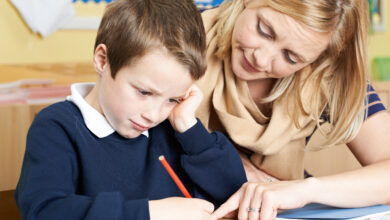
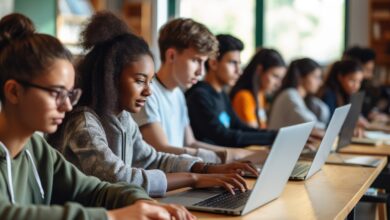

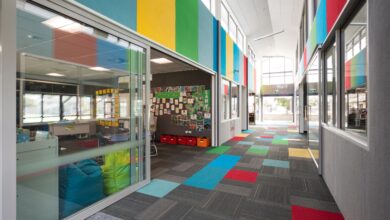
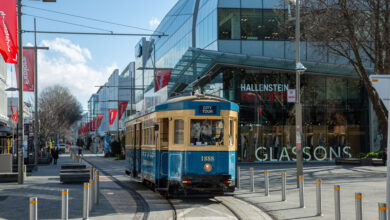




thank you so much for this great article
Amazing Blog post Thanks for sharing….